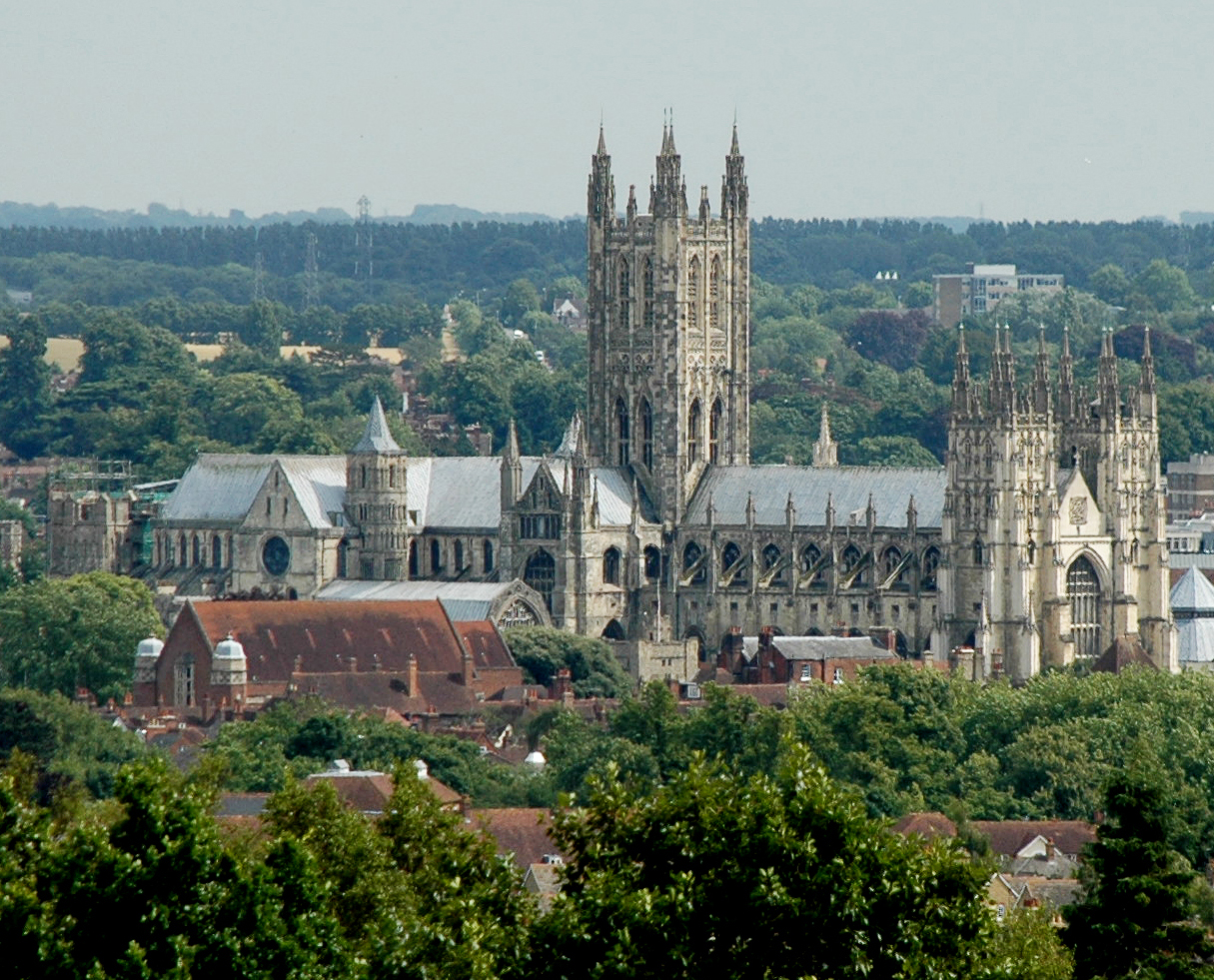
CANTERBURY, ENGLAND.
CANTERBURY, although not the largest, is the most important town in Kent, and is also the Cathedral City of the see of the Archbishop, Primate of all England. It is supposed to have been founded before the Christian era, some say in 900, B. C. When the Romans landed in Britain, it was in the possession of. the Belgae. Among the Romans it was known as Durovernum. It was walled in by Ethelbert about the year 600. In the reign of Richard II. the walls were repaired, at which time the deep ditches surrounding the city were 150 - feet wide. The walls were two miles in length, and on them were twenty-one small towers. There were seven gates, only one of which now remains.
It is called the Westgate, and is the entrance from the London Road. Canterbury was twice ransacked by the Danes. In 851 they nearly destroyed it, killing 7,000 of its 8,000 inhabitants.
The Archbishop was carried away in fetters and afterward murdered. At that period the city was very rich, having two years before paid the Danes $150,000 ready money to make peace.
At the time of the Norman conquest it was larger than London, and from that time until the Reformation it enjoyed a peaceful prosperity, profiting much by the continual coming in of pilgrims from all parts of England and the continent, to visit its religious establishments and shrines; more particularly that of Thomas a Becket.
Some little distance from the city, on the road to Dover, is the ruins of St. Sepulchre's Priory.
In the time of Henry VIII., Elizabeth Barton, called the Holy Maid of Kent, carried on her impostures here. She pretended to have the gift of prophecy, and proclaimed against those who favored the Reformation,—including the king, his divorce and second marriage, in her denunciations. She was arrested and executed at Tyburn, with six others, for treason. 'the Cathedral of Canterbury is one of the most venerable relics in England. Upon its site stood the magnificent palace of the Saxon kings of Kent.
The site was made over to Augustine by his royal convert, Ethelbert, who established a church and monastery there, called Christ's Church. St. Augustine was declared first Archbishop about the year 600. In. 1011 it was plundered by the Danes, but in 1023 Canute, the Dane, ordered its reconstruction. Twenty years later it was nearly destroyed by fire, and Bishop Laufranc rebuilt it on a grand scale. In 1174 two-thirds of the building was again destroyed, and it was rebuilt fireproof. Quite a portion of that work still remains in the Cathedral. From that time it was called the "Church of St. Thomas, the Martyr," in memory of the murder of that troublesome priest, Thomas a Becket, who was murdered there in 1170. A new shrine was erected for the saint in 1220, and so numerous were the offerings made by the pilgrims, who flocked there, of all grades of society from kings to peasants, that we are informed by Erasmus, that the chapel glittered with jewels, gold, and silver. Henry VIII. made short work of the whole affair.
The remains of Becket were disinterred, burnt, and scattered, and every article of value appropriated to the king's private use. There is now shown in the castle museum at Taunton a relic of Becket, said to have escaped the wrath of Henry.
It is a wooden vase containing some of the blood of Becket, which was gathered up by his admirers after his martyrdom. It was hid behind some plaster of Paris images. I looked at this vase two years since, while visiting the castle museum. It evidently contains dried blood of some kind, but who knows that it is Becket's blood? If so, what profit is there in his blood now?
J. N. LOUGHBOROUGH.